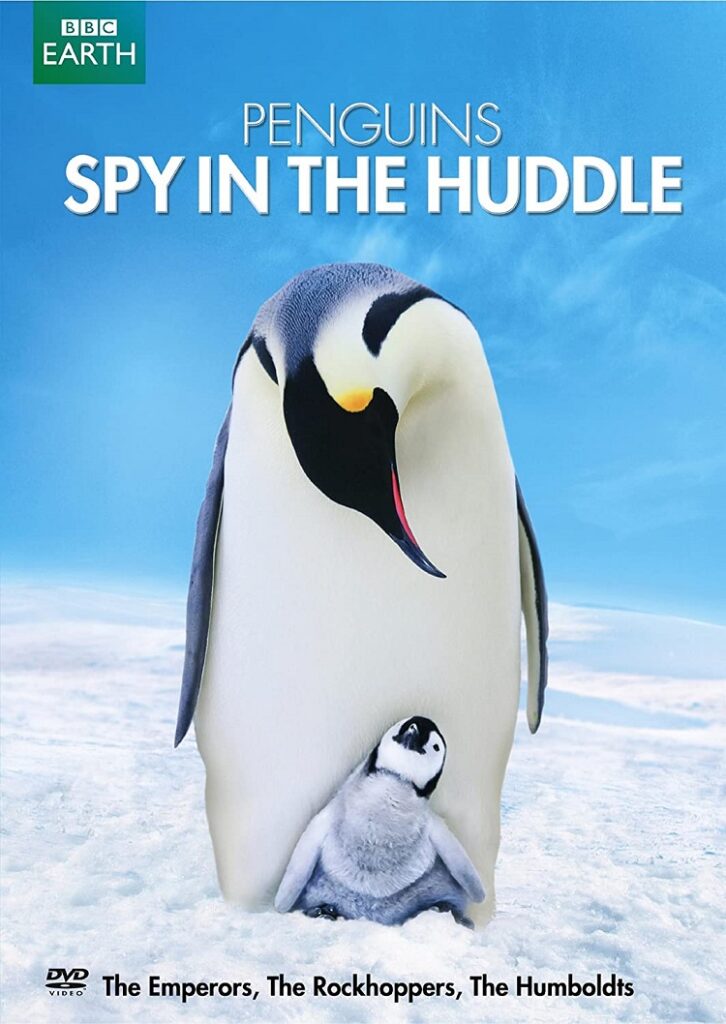
Penguins are remarkable creatures. Able to endure some of the most extreme climates on earth, they are also some of the most devoted parents in the animal kingdom. Through the use of spy cams, BBC Earth takes a closer look at the lives of emperor, rockhopper, and Humboldt penguins than ever before in Penguins — Spy In The Huddle.
For the documentary, which is narrated by David Tennant, the filmmakers used 50 different “penguin cams” to infiltrate the various penguin communities. Designed to look like the penguins they were filming, the cams were quickly accepted as “one of the birds,” with some mothers even trying to incubate the “egg cams” and nurture the “chick cams.” The documentary is broken up into three episodes — “The Journey,” “First Steps,” and “Growing Up — which deal with the mating, child rearing, and maturation of the different penguins.
For the emperor penguin, life is a series of lengthy, dangerous journeys. The first is the long walk toward their breeding grounds. Unlike the rockhoppers who mate for life, emperors pick a new mate each year. The females do a special waddle to show their acceptance, with the male mirroring their actions. After laying their eggs, the females turn the egg over to the male while the female makes the trek toward water to find fish. The male guards the egg for two months, not eating during this time, until the female returns with food and the male goes out to sea. It’s a remarkable show of devotion by both parents in the most extreme winter climates imaginable. Even more remarkable is the penguin’s eye view captured by the emperor cam. These mechanical birds have a camera in their bellies and one in their eyes and the actual penguins are none the wiser to their presence.
While the rockhopper penguins of the Falkland Islands don’t have the extreme winters to deal with, they do have to contend with the ocean and rocky terrain. Appropriately named, the penguins hop, rather than waddle, to help them scale rocky areas and build their nests upwards of 100m high to avoid the effects of the ocean. The males build the nests and, much like with the emperors, wait for the females to arrive. The females lay two eggs, one as a decoy, to ensure survival against predators such as petrels, which are a common predator to the emperor penguins, and skuas. Much like with the emperors, the rockhoppers took to the rockhopper cams well, assuming it was one of their own and allowing for fantastic images.
The Humboldt penguins are the only mainland penguins to survive in the tropics, residing in the desert of Peru. To combat the extreme heat, these penguins raise their chicks in the shade, often burrowing holes in the ground for nests. These nests double as an excellent defense against predatory birds, such as Belcher’s Gulls, who are reluctant to try and enter them. Humboldt penguins have the added disadvantage of dealing with sea lions as predators though, fortunately for them, when on land, the sea lions are clumsy and not as efficient a foe. Some of the best footage in the documentary comes during the Humboldt scenes, as the egg cams are able to capture the insides of these bird’s nests while the Humboldt cam, which is capable of swimming underwater, managed to film these birds underwater for the first time. These cameras not only let the viewer get much closer than they’d ever get otherwise, they do so in an unobtrusive manner, allowing the penguins’ lives to follow their natural course without human interference.
Throughout any of these penguins’ lbives, their primary focus is breeding and the care of their young. So important is this to these birds that adults who haven’t bred, or who may have lost their chicks for one reason or another, often try to steal chicks or eggs so they have a baby of their own to raise. The penguins take pride in their offspring, with one male emperor penguin eager to show off his baby to the other males. In this sense, they are no different than a proud human parent, showing off his or her baby.
One common theme throughout the documentary is this: penguins do not have an easy life. Whether it is dealing with harsh winters or extreme heat or the roaring ocean, just their day-to-day existence is rough at best. Still, these birds show an amazing amount of perseverance. This is evident from the footage captured from the spy cams used throughout. Whether it is a male emperor guarding the egg for months or penguin chicks taking their first steps toward independence, this footage offers a wonderful window into the life cycle of these incredible birds and contribute to making Penguins — Spy In The Huddle a fantastic documentary.